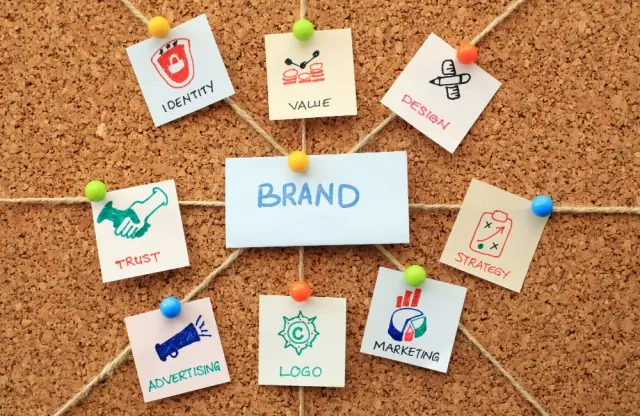
A brand style guide is more than just a set of design rules—it’s the backbone of a strong, recognizable brand. Whether crafting a bespoke brand identity or refining your visual identity design, a well-structured guide ensures consistency across every touchpoint. From logo design to messaging, it aligns all brand elements to create a cohesive brand image. If you’re a business looking to boost brand equity and sharpen your brand positioning, having a brand style guide is a game-changer.
Think of it as a blueprint that keeps your brand’s voice, visuals, and values intact. This guide simplifies the content creation process for businesses using creative agency services. It ensures every asset—whether a website, packaging, or ad—feels unmistakably yours. Even a branding consultancy depends on a clear style guide to maintain consistency. And if you’re investing in professional brand design, having one in place strengthens your long-term strategy.
This article explains why a brand style guide matters. It covers how it boosts business growth and the key elements that make it effective. You’ll also learn practical steps to develop your comprehensive guide, ways to maintain ROI through compliance, and how to scale it for future success. Whether new to branding or improving your content marketing, this guide will help you build a strong, consistent, and lasting brand story.

How a Brand Style Guide Accelerates Business Growth
A brand style guide is a key tool for businesses aiming to grow. It ensures a consistent brand identity across all platforms, which is vital for success.
Strengthening Brand Recognition
A unified visual and verbal identity makes your business instantly recognizable. When your creative team uses the same logos, colors, and tone everywhere, it boosts brand awareness. This consistency helps customers remember and choose your company over others.
Increasing Customer Trust
Consistent messaging across all channels builds credibility. When customers see the same brand elements—like logos and slogans—they feel more confident in your company. This trust encourages them to return, enhancing your brand equity.
Supporting Strategic Marketing Efforts
A well-documented style guide enhances marketing campaigns. It ensures all materials align with your brand positioning. This alignment makes promotions more effective, leading to a higher return on investment (ROI).
Developing a brand style guide directly impacts revenue and audience engagement. It ensures your brand collateral design is consistent, making your company more appealing in the market. This consistency attracts customers and drives business growth.

Key Elements for a Winning Brand Style Guide
A brand style guide is essential for consistency. It defines brand identity essentials, visual standards, and communication rules, ensuring every touchpoint aligns with your message. From logo usage to brand colors, it streamlines design and branding efforts. It also helps your creative team follow branding best practices, keeping content on-brand and visually cohesive for business growth.
1. Brand Identity Essentials
Core Values & Mission: Clearly define your company’s core values and mission. These guiding principles shape all brand communications, ensuring consistency and authenticity. Aligning your messaging with these values helps build trust and loyalty among your audience.
Unique Selling Proposition (USP): Identify what sets your brand apart from competitors. Your USP forms the heart of your brand narrative, highlighting the unique benefits and features that make your products or services stand out. This differentiation is crucial for effective brand positioning in the market.
2. Visual Standards
Logo Usage: Establish clear guidelines for logo usage, including rules on sizing, spacing, and color variations. This safeguards brand integrity and ensures that your logo remains recognizable across all platforms and materials. Consistent application of these guidelines is a branding best practice.
Color Palette: Define a specific color palette with precise codes (HEX, RGB, CMYK, Pantone) to ensure uniformity in all materials. Consistent use of brand colors enhances brand recognition and conveys a cohesive visual identity.
Typography: Specify the fonts and text hierarchies for headlines, subheadings, and body copy. Clear typography guidelines, possibly developed with typography design services for branding, maintain a professional and cohesive appearance across all communications.
3. Voice and Tone Guidelines
Language Style: Determine whether your brand voice is formal, casual, friendly, or authoritative. This clarity ensures that all communications resonate with your target audience and reflect your brand’s personality.
Communication Principles: Outline how to address audiences in various scenarios, from social media interactions to client emails. Providing specific examples helps maintain a consistent tone and approach, ensuring all communications are on-brand.
4. Supporting Imagery
Photography and Graphics: Provide examples or references for the style of visuals that best represent your brand personality. This includes guidelines on photographic style, composition, and subject matter to ensure consistency.
Iconography: Clarify design preferences for icons, symbols, or illustrations to maintain a cohesive aesthetic. Consistent iconography enhances brand recognition and supports a unified visual identity.
A well-defined brand style guide eliminates design inconsistencies, saving time and budget. Clear brand guidelines help your creative team work efficiently, reducing revisions and keeping all materials on-brand. This consistency strengthens brand equity, enhances market presence, and maximizes impact. Investing in a comprehensive brand style guide is a strategic move for sustained business growth.

Practical Steps to Develop Your Comprehensive Guide.
A complete brand style guide keeps your brand consistent and strong. Follow these steps to create a guide that clearly defines your brand’s values and visual style.
1. Conduct a Brand Audit
Check Current Materials: Collect all existing brand assets, including logos, color schemes, and messaging. Audit these materials to determine what resonates with your audience and identify areas that may need updating. This evaluation helps in understanding the effectiveness of your current brand identity and visual style.
Identify Gaps: Look for inconsistencies in your brand materials that could confuse customers or weaken brand perception. Pinpointing these brand gaps allows you to address them proactively, ensuring a more cohesive brand experience.
2. Collaborate with Stakeholders
Cross-Functional Input: Engage team members from marketing, sales, design, and leadership to gather diverse perspectives. This collaboration ensures that you consider all key aspects of the company’s brand. This will lead to a more comprehensive and effective style guide.
Consensus Building: Work together to align on core values and brand direction. Building consensus helps prevent conflicting messages and ensures that all communications are consistent with the brand’s identity.
3. Document Your Guidelines
Organized Structure: Create a user-friendly document that presents visuals, color codes, and text rules. Use style guide templates to structure the information, making it easy for users to understand exactly how to use each brand element.
Implementation Examples: Provide sample marketing materials, webpages, and social media posts to demonstrate correct usage. These examples serve as practical references. They’ll help your creative team apply the guidelines consistently across various brand uses.
A well-crafted brand style guide streamlines design, reducing creative bottlenecks and costly revisions. Clear brand guidelines help teams work efficiently, keeping all outputs on-brand. This boosts brand impact, strengthens market presence, and drives long-term business growth while saving time and budget.

Maintaining ROI by Ensuring Compliance and Updates
Maintaining a strong return on investment (ROI) requires regular compliance with and updates to your brand style guide. This ensures that your brand remains consistent and relevant in a changing market.
Ongoing Training
Regular training helps new employees, freelancers, and agencies follow your brand guidelines. This ensures everyone creating brand materials aligns with your brand values. It also maintains the desired look and feel across all platforms.
Approval Process
A clear review and approval process ensures all content stays on-brand. This maintains brand consistency and prevents deviations that could weaken your brand identity.
Performance Monitoring
Tracking customer recognition and campaign engagement helps measure your brand style guide’s effectiveness. Monitoring these metrics shows the financial benefits of following branding standards.
Following your brand style guide protects your investment in professional brand design. Consistent branding strengthens market presence and increases returns. Regular updates and best practices in branding design keep your brand relevant and appealing.

Scaling Your Brand Style Guide for Future Success
To ensure your brand style guide remains effective as your business evolves, it’s crucial to implement strategies that allow for scalability and adaptability. This approach maintains a consistent visual identity and supports long-term growth.
Periodic Reviews
Schedule quarterly or annual reviews of your brand style guide to include emerging trends and major brand updates. Regular checks help spot and bridge brand gaps and keep guidelines relevant. They also ensure alignment with the latest in professional brand design.
Expanding Brand Assets
As your business grows, update your guidelines with new brand logos, color palettes, and brand voice refinements. Integrate elements from 2025’s graphic design trends to stay fresh and competitive. This keeps all assets aligned with your look and feel, maintaining a strong brand presence across platforms.
Leveraging Technology
Use brand management platforms to keep guidelines accessible and updated for all stakeholders. These tools simplify creating content, reduce creative bottlenecks, and ensure consistent branding. They also help teams follow established standards and maintain uniformity across all brand assets.
Regularly updating your brand style guide strengthens brand equity, ensuring long-term growth and profitability. Working with a branding agency or using brand development services keeps your guidelines relevant and effective. This improves your brand presence and ensures all branding activities align with your business objectives for the greatest impact.

Creating a Brand Style Guide for Lasting Impact
A well-structured brand style guide is more than a set of rules. It’s a strategic asset that ensures consistency, credibility, and business growth. When every stakeholder follows a clear guide, your brand becomes instantly recognizable. This strengthens brand equity and reinforces brand positioning. Consistency builds audience trust, improves market presence, and increases ROI.
Developing a brand style guide creates a blueprint for professional brand design. It ensures all brand assets—logo design, typography, color palettes, and messaging—stay aligned. Regular updates and compliance keep your brand relevant in a changing market. This eliminates inconsistencies that could weaken your brand identity. Using brand management platforms, periodic reviews, and evolving brand guidelines helps your business stay ahead. It also ensures adaptation to 2025’s graphic design trends while maintaining a consistent visual identity.
At Synapse, India’s top branding agency with over two decades of experience in creative brand design, we help businesses build and refine their brand identity. Check out our Showcase to see the impactful projects we’ve worked on. Explore our Services to learn more about what we do. Have questions? Call 1800 121 5955 (India), email contact@synapse.co, or message us on WhatsApp. You can also fill out our Contact Form with your project details, and we’ll get in touch!







